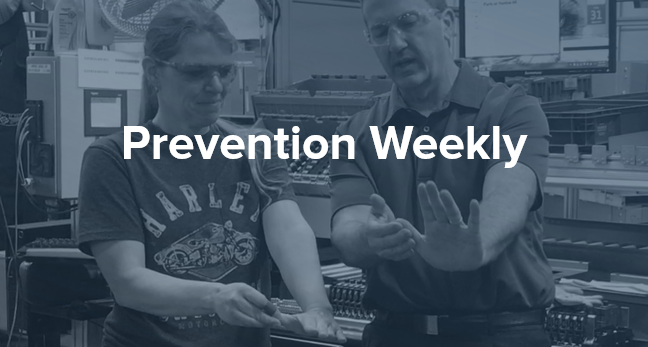Prevention Weekly delivers the best ergonomics, workplace athlete health, and safety leadership news right to your inbox every week.
Featured Article
Ergonomics to Support an Aging Workforce
The changing make up of staff at companies everywhere presents both challenges and opportunities. Promoting health, safety, and wellbeing is essential if companies are to truly engage older workers and make the most of their expertise, experience, and know-how across a range of different sectors.
Ergonomics to Support an Aging Workforce
Ergonomics
A Step-by-Step Guide to Using the Snook Tables
Learn how to use the Snook Tables to evaluate manual material handling tasks for ergonomic risk factors.
A Step-by-Step Guide to Using the Snook Tables
5 Keys to Sustainable Safety and Ergonomics
A disheartening reality for many safety and ergonomics professionals is that many of their initiatives ultimately become the victims of their own success. Once they accomplish the organization’s initial objectives, investments in ergonomics and other safety solutions either evaporate or are reallocated elsewhere.
5 Keys to Sustainable Safety and Ergonomics
Workplace Athlete Health
NIOSH: 1 in 5 workers is obese, inactive or sleep-deprived
More than 20 percent of workers are obese, don’t get enough physical activity or are short on sleep, according to a recent study from NIOSH. Using 2013 and 2014 data from the Behavioral Risk Factor Surveillance System, researchers looked at workers from 29 states and 22 occupational groups. They found that approximately 16 percent to 36 percent of workers had a body mass index of 30 or higher, and 1 in 5 workers said they had not engaged in any leisure-time physical activity in the past month. In addition, about 31 percent to 43 percent of respondents averaged less than seven hours of sleep a night.
NIOSH: 1 in 5 workers is obese, inactive or sleep-deprived
Injury Prevention Tip: Preventing Rotator Cuff and Shoulder Injuries
The shoulder joint has a big workload. This joint is held and moved by muscles around the shoulder and neck. These muscles do double-duty work holding and moving both the head-neck-shoulder complex as well as the arms. There is a group of muscles and tendons (rotator cuff) that move and hold the shoulder together while the arms do work.
Injury Prevention Tip: Preventing Rotator Cuff and Shoulder Injuries
Safety Leadership
5 Qualities of Effective Safety Leaders
A critical part of the success of a health and safety program rests on the behavior and qualities of the effective safety leaders within a particular company. The personal qualities and attributes of such leaders are vital in inspiring employees to a higher level of safety while maintaining and exceeding productivity requirements.
5 Qualities of Effective Safety Leaders
Ergonomics Plus solutions help proactive safety teams prevent musculoskeletal injuries and advance employee well-being.

